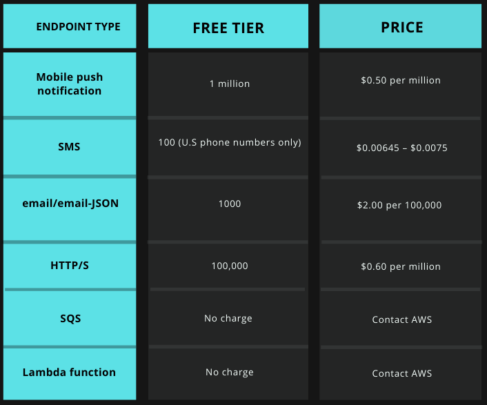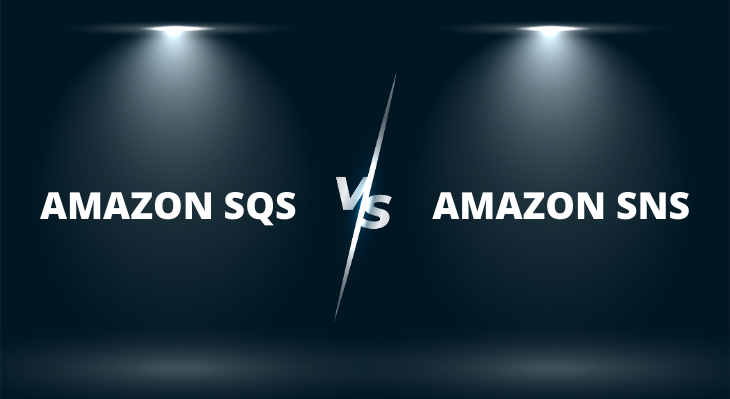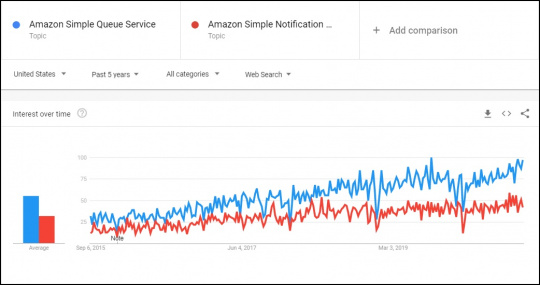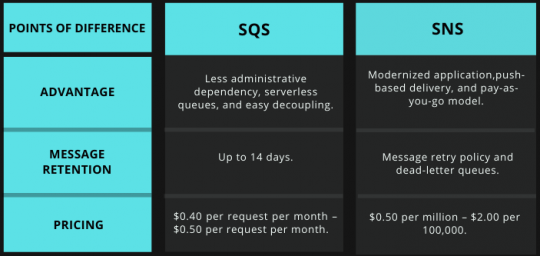In the cloud platform, most tasks related to storage, processing, and execution happen with efficient messaging services at every application layer.
Messaging services work in a proper standard to ensure uninterrupted deliverance of events or tasks.
Amazon SQS and SNS are the two messaging standards that ensure the smooth execution of events.
Amazon SQS is a distributed message queuing service, wherein it sends messages through web applications for communications over the internet.
Amazon SNS is a managed messaging service for system-to-system and application-to-person communications.
Exploring the Difference Between Amazon SQS and SNS
From the search results trend of the past five years, Amazon SQS seems to be slightly more popular than SNS.
Key benefits of Amazon SQS and SNS in terms of Reliability and Scalability:
Reliability of Messages
A large volume of data can be sent with the help of Amazon SQS.
Messages in the SQS are sent with the advantage of having an application decoupling component.
Because of the application decoupling component, only a particular application component is effected in case of any failure rather than disturbing the whole process.
Thus, this ensures that neither of the message sending process is effected on the cost of failure generated in any other application component.
Moreover, multiple message copies are stored to be made available for use whenever the need arises.
Here, in Amazon SNS, unlike its counterpart Amazon SQS, the messages are dependent on the availability of SNS Topics.
Topics in SNS act as communication channel access point.
For the effective deliverance of messages, the data related to it is stored at multiple geographical storage.
Application decoupling is not done here as in Amazon SQS, but in case of any error from subscriber endpoints initiatives like message retry policies and dead-letter queues are initiated for effective deliverance of messages.
Scalability
For a better service to the users in terms of their growing usage, Amazon SQS depends on the wider network of AWS Cloud.
If the applications are experiencing increasing workload, Amazon SQS scales accordingly with the application workload to provide uninterrupted services.
An unlimited amount of messages per queue can be sent with the help of the standard queues in the SQS.
Amazon SNS too is dependent on the wider network of AWS for effective message deliverance.
However, the difference in terms of scalability lies in the working module of both.
Amazon SQS works on messaging functions of software components only, whereas SNS is not only focussed on system communications but can be used for direct user communication also.
Millions of messages per second can be sent even in short interval traffic patterns, thus enabling the uninterrupted services.
Also Read: Amazon SQS vs. Kinesis: Understanding the Difference
Key features of Amazon SQS include:
Queue Types
Standard Queues
Within a standard queue, users need not worry about the transaction limits.
Moreover, to ensure the proper deliverance of messages several times, more than one copy of messages are delivered.
FIFO Queues
Within a FIFO queue, up to 3,000 messages per second are supported.
Under this queue type, multiple message copies are not created.
Messages are only delivered once, and until the consumer is taking any further action, it stays available.
Moreover, the order of sending messages remains the same.
Functionality
More Queues and Messages: Users for sending messages can create the maximum number of queues and the maximum number of messages within any region.
Retaining Messages: The limit for retaining any message is up to 14 days.
Message Locking: Users don’t have to worry about the deletion of any messages.As whenever a message is received it is locked while processing.
So, in case a user locks a message and later wishes to delete the entire thread, the locked message will not be deleted.
Integration With AWS
Efficiency in delivering messages can be improved by integrating Amazon SQS message queue with other Amazon services like Redshift, DynamoDB, and RDS.
In turn, this is good for the efficiency of distributed applications that run on multiple systems for a single task.
Below discussed are some of the features of Amazon SNS:
Event-Driven Computing
Amazon SNS is based on event-driven computing.
Under this concept, a task is only performed in case of any event.
Whenever a publisher’s service side creates an event, subscriber services respond automatically to such events.
One of the benefits achieved through this is that of workflow automation.
Filtering of Messages
With this feature’s help, a user receives the ability to create a filter policy related to the topics he is interested in.
Rather than receiving every type of notification, users will find themselves focused on such a filtering approach towards their choices or topics they feel interested in.
Message Privacy
A topic in Amazon SNS can be defined as an access point that acts as a communication channel.
Users in Amazon SNS can privately send messages to Amazon SNS topic.
For performing this task, it is supported with VPC Endpoints (VPCE) via AWS PrivateLink.Here, the VPC endpoint allows users to establish a VPC connection privately to supported AWS services.
Also, AWS PrivateLink protects the data shared with cloud applications without getting exposed to the public internet connection.
Because of such features, the risk of data exposure from public internet is kept to a minimum.
This thus ensures data privacy.
Below mentioned are some of the reviews for Amazon SQS taken from g2.com.
- A verified computer software user finds Amazon quite eligible for SME platforms because of it being cost-effective. Moreover, the user found it quite flexible when it comes to setting up the configurations according to their work requirements.
- Another verified software developer user finds Amazon SQS quite reliable for the organizations using multi-tier architecture. Loosely coupled applications can be easily combined with the efforts of SQS.
Below mentioned reviews for Amazon SNS have been taken from trustradius.com.
- A verified senior solution architect finds Amazon SNS quite an effective connector in AWS ecosystems.Multiple problems like sending push notifications and reporting on environmental health were solved with the help of SNS.
- Another verified user finds SNS is efficient in terms of cost.They used Amazon SNS in their organization for handling notification service without being dependent on servers or additional resources.
Pricing details for Amazon SQS are explained below
Users don’t get charged for the first 1 million monthly requests.
Price after the free quota is exhausted are as follows:
Request Type Price

Pricing details for Amazon SNS are as follows:
Users are not charged for the first 1 million Amazon SNS requests.
After the exhaustion of the free quota, a price of $0.50 per 1 million requests is charged.
A more detailed priced description is illustrated below:
Notification Deliveries Pricing

Conclusion
Both Amazon SQS and Amazon SNS are messaging services.
However, if you are looking for sending a larger message volume to communicate with software components Amazon SQS is ideal for that.
But If you want to connect to the users directly through SMS or emails SNS should be your ideal choice.



